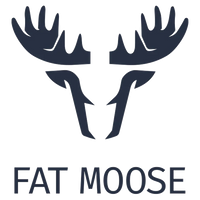Læs dette før du går offpiste
Uanset hvor stor udfordring nogle skisportssteder giver på deres pist-løjper, er det aldrig udfordrende nok for nogle vovede skiløbere. Disse skiløbere higer efter mere intensitet og sværhedsgrad og har ikke noget imod at sætte deres krop og sind på prøve. Så de går off-piste!
Off-piste skiløb refererer til enhver form for skiløb, der udføres langt og ud over de præparerede løjper i et skisportssted. Når man udforsker off-piste terræn, er der ofte ustabile sneforhold og landskabsejendommeligheder såsom dyb sne, snavs, bump, ekstreme skråninger og slisker. Udtrykket off-piste bruges i flæng med backcountry for at beskrive terræn, der er uden for grænserne til skisportssteder.
Hvis du er en af disse usædvanligt eventyrlystne skiløbere, der drømmer om at forlade de konventionelle on-piste-løjper for at lægge nye spor ned ad off-piste-pisterne, må du hellere være forberedt. Før du træder ind på disse utæmmede stier, skal du vide, hvad de kræver, og hvordan disse krav kan opfyldes.
Off-piste skiteknikker
De rigtige teknikker er lige så vigtige som at have det nødvendige udstyr, når du skal off-piste. På grund af den uplejede karakter af off-piste terræn, kan det være sværere for skiløbere at lave hurtige sving.
Nedenfor er tre skiteknikker, der vil hjælpe dig med at navigere de stejle pister og uregerligt terræn off-piste.
Blocking Pole Plant-teknikken
Blocking pole plant-teknikken er en skiteknik, der forhindrer bevægelse af overkroppen. Det hjælper ikke kun med at time sving, men hjælper også med at lave snævrere sving ned ad off-piste-skråninger.
Med denne teknik kan skiløbere forhindre deres overkroppe i at accelerere ned ad bakke og dreje stramt for at opretholde deres hastighed på stejle skråninger.
Grundlæggende om denne teknik
- Pæleplanter laves på indersiden af en sving
- Det er vigtigt at time din stangplante ved at sætte kanterne på dine ski
- Placer din styrtstang i en vinkel på 45 grader i forhold til dine ski, og skub langsomt din hånd ned ad bakken, mens du står på ski rundt om stangen, så du er klar til at plante den anden stang med den anden kant sat til næste sving.
Hop Turn-teknikken
Nogle off-piste pister er normalt alt for slanke til at manøvrere med store buesving. Derfor har skiløbere, der perfekt kan klare hop-sving, utvivlsomt ingen problemer, når de står over for smalle slisker og kløfter.
Grundlæggende om denne teknik
- Sæt kanterne på dine ski, og plant derefter din stang for at lave et sving
- Bøj dine knæ for at absorbere energi
- Brug den absorberede energi til at bryde ud af lænken og sving rundt om stangen, du plantede.
- Så snart du lander, plant din anden stang, bøj dine knæ og forbered dig på at bryde ud igen.
Kick Turn-teknikken
Kick-sving er medvirkende til at navigere på de stejle skråninger i off-piste-terræner, og de er en effektiv måde at skifte retning i luften uden først at skulle lande. Skiløbere bruger denne teknik til hurtigt at komme ud af urolige stier.
Grundlæggende om denne teknik
- Med dine ski pegende til siderne, drej din overkrop, så den vender nedad
- Tag din downhill-stang og placer den op ad bakke og bag dig. Brug både dine stave og din op ad bakke fod for at holde balancen
- Løft din alpinski med et spark, indtil din fod er i den anden retning.
- Flyt din vægt over på det nedadgående ben for at finde en balance
- Medbring din op ad bakke ski og stav, så den matcher din anden ski og stav.
- At dreje rundt for at vende mod den anden retning ændrer op ad bakkeskien til alpinskien.
Essentielle off-piste skiløb
Off-piste skiløb er et helt andet boldspil end almindeligt skiløb. At begive sig ud over et skisportssteds grænser og ind i baglandet for at stå på off-piste betyder, at du forstår, at du er ansvarlig for dit velvære.
For at være forberedt på, hvad end der måtte komme din vej, er her et par væsentlige ting, du skal tage i betragtning, når du kører off-piste:
Lavinesikkerhed og gear
Da off-piste stier ikke vedligeholdes af skisportsstedets ledelse, kan laviner være en stor bekymring for skiløbere. Derfor skal du være tilstrækkeligt trænet i at forstå laviner og hvordan du undgår lavineterræner.
Skiløbere rådes til at tage mindst et lavinekursus på niveau 1 certificeret af et anerkendt lavineforsknings- og uddannelsesinstitut, før de begiver sig ud på de vilde backcountry-stier.
Her er en liste over sikkerhedsudstyr, du skal tage med dig i tilfælde af en lavine:
- Lavine airbag
- Lavinebeacon/transceiver
- Førstehjælp
- sonde
- Snacks og vand
- Sneskovl
Andet freeride udstyr
On-piste og off-piste skiløb kræver typisk freeride-udstyr. Selvom dette udstyr kan ændre sig afhængigt af hvor og hvornår du skal stå på ski, er her de vigtigste til offpisteskiløb.
- Hjelm
- Vandtæt tøj
- Alle bjerg og freeride ski
Konklusion
Når man kører off-piste, er der flere uregelmæssigheder, en skiløber kan støde på i terrænet. Dette gør navigation gennem stier meget mere besværlig, hvilket kræver en masse erfaring, øvelse, træning og mod.
Fat Moose er en fantastisk følgesvend til den ivrige eventyrer. Vi laver overtøj, der giver holdbarhed, komfort og anvendelighed til dem, der er villige til at gå den ekstra mil. Uanset om du er til den urbane eller udendørs livsstil, så kontakt os, og lad os gøre dit liv til et eventyr.


